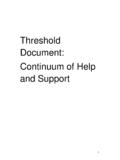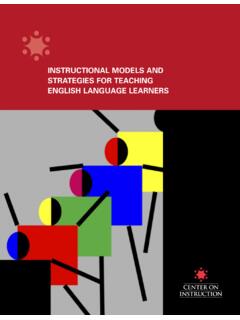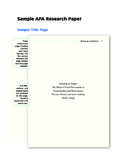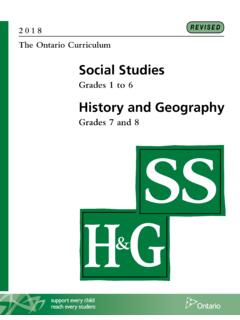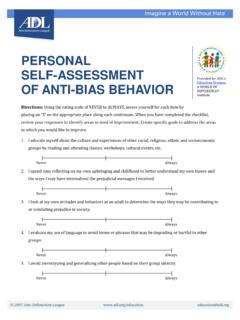Transcription of Threshold Document: Continuum of Help and Support
1 Threshold document : Continuum of Help and Support 1. Contents Introduction .. 4. The Four Levels of Need .. 6. No additional needs .. 6. Early help .. 6. Children with complex multiple needs .. 6. Children in acute need .. 6. The Assessment Triangle .. 7. Neglect .. 8. The Indicators of Possible Need .. 10. Indicators of Need Matrix [Tiers 1 - 4] .. 11. Development of the baby, child or young person .. 11. The child's education and employment .. 11. The child's health .. 12. The child's emotional wellbeing .. 13. The child's behaviour .. 15. Abuse and neglect .. 19. Environmental Factors .. 20. Parental and Family Factors .. 24. Parenting during pregnancy and 24.
2 Meeting the health needs of the child .. 25. Meeting the educational and employment needs of the child .. 26. Meeting the emotional needs of the child .. 26. Meeting the practical needs of the child .. 29. Domestic abuse .. 29. Parental and family health issues and disability .. 31. Protection from harm: physical or sexual abuse .. 32. 2. Criminal or anti-social behaviour .. 34. Threshold Criteria: Section 47, Section 20, Section 31 .. 35. Section 47, Children Act 1989: Child Protection enquiries [Tier 4] .. 35. Section 20, Children Act 1989: Child provided with accommodation [Tier?].. 37. Section 31, Children Act 1989: Initiation of care proceedings.
3 38. Section 1 Children Act 1989 The Court Welfare Checklist .. 39. 3. Introduction Safeguarding and promoting the welfare of children can be defined as: Protecting children from maltreatment Preventing impairment of children's health or development Ensuring that children grow up in circumstances consistent with the provision of safe and effective care Taking action to enable all children to have the best outcomes Working Together to Safeguard Children sets out a clear expectation that local agencies will work together and collaborate to identify children with additional needs and provide Support as soon as a problem emerges. Providing early help is far more effective in promoting the welfare of children.
4 And keeping them safe than reacting later when any problems, for example neglect, may have become more entrenched. The importance of using a child-centred approach in following the child's journey is also emphasised. All services which are provided must be based on a clear understanding of the needs and views of the individual child in their family and community context. This document provides a framework for professionals who are working with children, young people and families It aims to help identify when a child may need additional Support to achieve their full potential. It introduces a Continuum of help and Support , provides information on the levels of need and gives examples of some of the factors that may indicate a child or young person needs additional Support .
5 By undertaking assessments and offering services on a Continuum of help and Support , professionals can be flexible and respond to different levels of need in different children and families. The framework recognises that however complex a child's needs, universal services education and health, will always be provided alongside any specialist additional service. Along the Continuum of need services become increasingly targeted and specialised according to the level of need. Children's needs are not static, and they may experience different needs at different points on the Continuum . throughout their childhood years. This document should be used in conjunction with The London Child Protection Procedures: The Continuum of need matrix does not provide an exhaustive list but provides examples that can be used as a tool to assist assessment, planning and decision making when considering the needs of children and their safeguarding needs in particular.
6 Any safeguarding indicators of concern 4. should always be considered alongside any related needs. It should be remembered that some children will have additional vulnerability because of their disability or complex needs and the parental response to the vulnerability of the child must be considered when assessing needs and risks. For some areas of need there may be specialist tools available to assess those needs such as the Neglect toolkit and the CAADA DASH domestic violence risk assessment tool. These are available on the LSCB website at: Remember where there is an urgent and immediate need to protect a child, dial 999 to contact the Police.
7 Otherwise for all other children who may be at risk of significant harm, contact the relevant Local Authority, Children's Social Care Service as soon as possible. 5. The Four Levels of Need Tier 1: No additional needs These are children with no additional needs; all their health and developmental needs will be met by universal services. These are children who consistently receive child focused care giving from their parents or carers. The majority of children living in each local authority area require Support from universal services alone. Tier 2: Early help These are children with additional needs, who may be vulnerable and showing early signs of abuse and/or neglect; their needs are not clear, not known or not being met.
8 These children may be subject to adult focused care giving . This is the Threshold for a multi-agency early help assessment to begin. These are children who require a lead professional for a co-ordinated approach to the provision of additional services such as family Support services, parenting programmes and children's centres. These will be provided within universal or targeted services provision and do not include services from children's social care. Tier 3: Children with complex multiple needs These children require specialist services in order to achieve or maintain a satisfactory level of health or development or to prevent significant impairment of their health and development and/or who are disabled.
9 They may require longer term intervention from specialist services. In some cases these children's needs may be secondary to the adults needs. This is the Threshold for an assessment led by children's social care under Section 17, Children Act 1989 although the assessments and services required may come from a range of provision outside of children's social care. Tier 4: Children in acute need These children are suffering or are likely to suffer significant harm. This is the Threshold for child protection. These children are likely to have already experienced adverse effects and to be suffering from poor outcomes. Their needs may not be considered by their parents.
10 This tier also includes Tier 4. health services which are very specialised services in residential, day patient or outpatient settings for children and adolescents with severe and /or complex health problems. This is likely to mean that they may be referred to children's social care under section 20, 47 or 31 of the Children Act 1989. This would also include those children remanded into custody and statutory youth offending services. 6. The Assessment Triangle The assessment triangle below should be used to identify the interplay between the three domains to assess the child's needs and form a judgement regarding the level of need. 7. Neglect It can be particularly difficult for practitioners to recognise the signs of neglect because there is unlikely to have been a significant incident or event that highlights the concerns; it is more likely that there will be a series of concerns over a period of time that, taken together, demonstrate that the child is in need or at risk Children (including those who are unborn) need adequate food, water, shelter, warmth, protection and health care in order to thrive.
